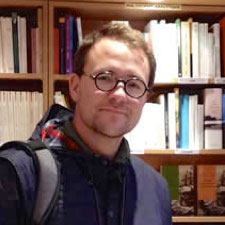This project investigates a new account of consciousness. Our conscious lives are what we are most familiar with. We all know what it is like to have a conscious experience of something. So one might expect that an account of consciousness would be easy to come by. But appearances can be misleading. In the sciences of mind and brain, many believe that consciousness is one of the biggest mysteries. How could this be so? The puzzle is: how could a few pounds of soft nervous tissue—brains consisting of cells, hormones, and electrical currents—give rise to the sensational world of conscious experience?
This question invites two standard replies. Some accept physicalism. It states that everything that exists is physical. So, if consciousness is real, it must be physical itself. This makes it possible to explain consciousness in the vocabulary of the physical sciences—for example, neuroscience. Others accept a strong form of non- physicalism. They believe that consciousness cannot be reduced to a mere physical phenomenon, and hold that consciousness cannot be explained on the basis of the physical sciences alone.
This project develops a third and very different solution—one that goes between the two standard replies outlined above. Physicalism and non-physicalism have points of attraction. But they also face immediate and familiar problems. This project explores how a physical organ—the brain—can produce a nonphysical process—consciousness—that has causal effects on the brain.
The results of this investigation are as follows. First, it suggests that a physical system can have nonphysical attributes such as consciousness. This leads to a new view of consciousness. It shows that consciousness is a probabilistic aspect of the physical brain. Thus, this project breaks with physicalism in conceiving of consciousness as nonphysical. The second result is that one can be skeptical of physicalism without rejecting an explanation of consciousness in terms of the physical sciences. It is a result based on research in theoretical neurobiology merging Bayesian probability and information theoretical models of the brain with studies on consciousness. So, this project breaks with stronger forms of non-physicalism, since it takes consciousness to be nonphysical and, at the same time, explainable via tools and methods in the physical sciences.
The implications of the project are the following. First, many believe that consciousness is the biggest mystery. But if the solution explored in this project is correct, it follows that consciousness is not a mystery. It is like any other probabilistic aspect of physical systems. This is a significant implication. Second, by far the most influential position in the sciences of mind and brain is physicalism. This project implies that we have good reasons to be skeptical about physicalism as our primary way of understanding consciousness and its place in the natural world.
As a result, this project aligns with the New Directions in the Study of the Mind project in seeking alternatives to reductive physicalism in an exploration of consciousness.
Image: In the dice box, Tomi Tapio K

Michael D. Kirchhoff
Principal Investigator